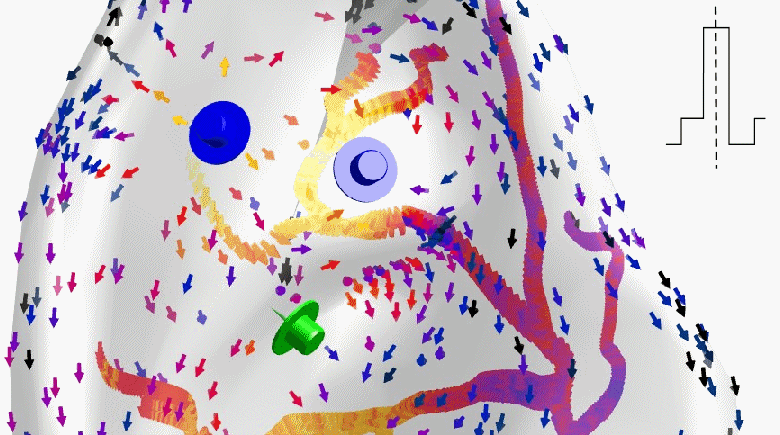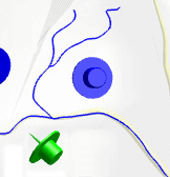
Percutaneous electrical stimulation of the auricular vagus nerve (pVNS) is an electroceutical technology with the potential to address diverse chronic ailments. The selection of stimulation patterns is empirical, which may lead to under-stimulation or over-stimulation. The objective is to assess the efficiency of different stimulation patterns with respect to individual perception and to compare it with numerical data based on in-silico ear models. In the present study, monophasic (MS), biphasic (BS) and a novel triphasic stimulation (TS) patterns were tested in volunteers. Different clinically-relevant perception levels were assessed. In addition, individual and simple in-silico models of the human ear were created with embedded fibers and vessels to assess different excitation levels using neurophysiological models. TS indicates experimental superiority over BS which is superior to MS while reaching different perception levels. TS requires about 57% and 35% of BS and MS magnitude, respectively, to reach the comfortable perception. Experimental thresholds decrease from non-bursted to bursted stimulation. Numerical results indicate a slight superiority of BS and TS over MS while reaching different excitation levels, whereas the burst length has no influence. TS yields the highest number of asynchronous action impulses per stimulation symbol for the used tripolar electrode set-up. As a conclusion, the comparison of experimental and numerical data favors the novel TS pattern. The presented analysis separates excitatory pVNS effects in the auricular periphery, as accounted by in-silico data, from the combination of peripheral and central pVNS effects in the brain, as accounted by experimental data. The proposed approach moves from an empirical selection of stimulation patterns towards efficient and optimized pVNS settings.

